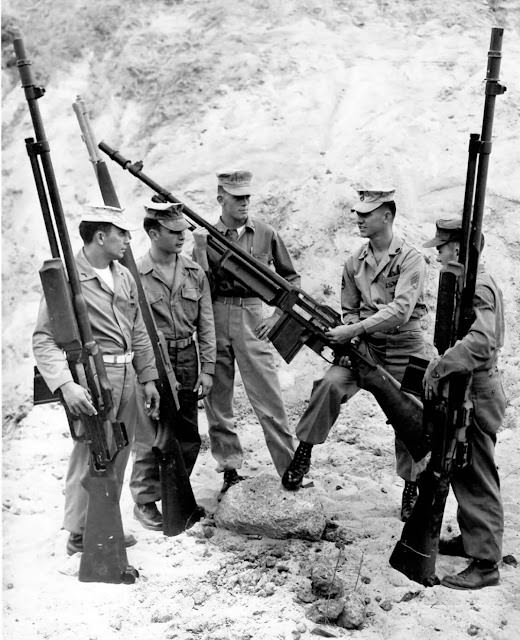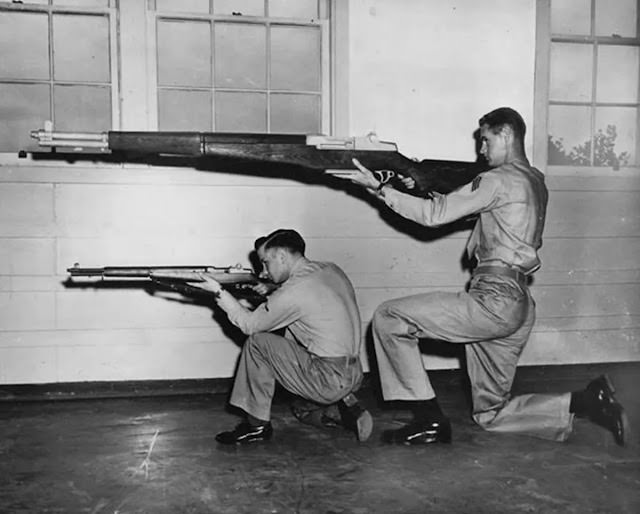In the mid-20th century, the U.S. military, faced with the urgent need to train many recruits quickly during World War II, innovated several training methodologies. Among these innovations were oversized training aids, specifically designed to facilitate a better understanding of weapon mechanics and parts among soldiers. These aids were a step beyond the traditional posters and films, offering a hands-on, tactile learning experience.
Utilization and Features at Camp Pendleton, 1956
By 1956, at Camp Pendleton, California, these gigantic training guns were in active use, serving as an educational tool for Marines. The training aids were deliberately oversized replicas of actual weapons, designed to break down complex mechanics into understandable, visible parts. Key operational features were color-coded to mimic the appearance of different components, making the learning process both interactive and visually engaging. Despite their large size, these replicas were made from light aluminum, ensuring they were not cumbersome to handle.


Advantages of Double-Size Training Aids
The double-size training aids provided several educational benefits. They made it easier for soldiers to grasp the intricacies of weapon operation and maintenance by allowing for direct interaction with a larger-than-life model. The use of simulated ammunition, crafted from plastic, demonstrated the loading process in a clear, straightforward manner. Moreover, these aids came with a dual-purpose transportation and storage case, which could also be used as a display base during instructional sessions.
These oversized training weapons remained in use from the mid-1940s until the late 1950s. The introduction of new weaponry, such as the M14 rifle, rendered the existing training aids obsolete, as they no longer represented the current armaments accurately. Consequently, many of these unique educational tools were transferred to museums or military surplus stores.


